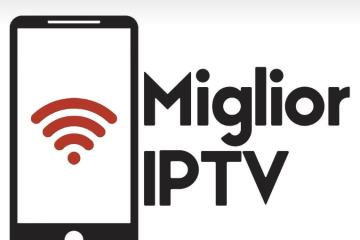In today’s rapidly evolving business landscape, procurement and sourcing functions are becoming increasingly complex. With globalization, digital transformation, and rising customer expectations, procurement professionals face unprecedented challenges in managing supplier relationships, optimizing sourcing strategies, and ensuring cost-effectiveness. Generative AI offers a powerful solution, automating procurement tasks, enhancing vendor management, and transforming traditional sourcing practices. This article explores how generative AI and AI agents are revolutionizing procurement, specifically in the areas of sourcing and vendor management.
The Role of Generative AI in Procurement and Sourcing
Generative AI is revolutionizing procurement by automating routine tasks, generating data-driven insights, and supporting strategic decision-making. Procurement and sourcing traditionally involved manual, time-intensive processes like supplier vetting, contract negotiation, and risk assessment. Generative AI for procurement and sourcing brings efficiency and intelligence to these processes, allowing procurement teams to focus on strategic initiatives.
Key Benefits of Generative AI in Procurement and Sourcing
- Automated Task Management: AI can handle repetitive tasks such as data entry, contract management, and purchase order processing, saving time and reducing errors.
- Enhanced Supplier Insights: AI-powered analytics generate insights on supplier performance, risk factors, and compliance, enabling proactive supplier management.
- Cost Optimization: AI identifies cost-saving opportunities by analyzing market trends, supplier pricing, and purchasing patterns.
- Risk Mitigation: Through predictive analytics, AI can forecast potential risks, from supply chain disruptions to supplier reliability issues.
Applications of Generative AI in Procurement and Sourcing
Generative AI offers targeted solutions across various procurement functions, from sourcing to contract management and vendor risk assessment. By utilizing AI agents, procurement teams can streamline processes and improve decision-making, ultimately reducing costs and enhancing supplier relationships.
1. Automated Supplier Identification and Selection
Finding the right supplier is critical for procurement success. Generative AI can analyze large datasets to match suppliers with specific needs, based on factors such as pricing, location, quality standards, and past performance.
- Supplier Screening Agent: This AI agent automates the supplier identification process by analyzing vendor databases, filtering by criteria such as quality ratings and compliance history.
- Scoring and Ranking: AI models assign scores to potential suppliers, enabling procurement teams to quickly shortlist vendors who meet their requirements.
2. Vendor Management and Relationship Optimization
Effective vendor management is crucial for maintaining strong, productive supplier relationships. Generative AI can support vendor management by providing actionable insights on vendor performance, contract compliance, and risk levels.
- Vendor Performance Analysis Agent: This agent monitors vendor performance against KPIs such as delivery timelines, quality standards, and cost efficiency.
- Automated Communication: AI agents can automate communication with suppliers, handling inquiries, sending updates, and notifying them about important changes.
3. Contract Lifecycle Management
Managing contracts across their lifecycle—from negotiation to renewal—can be time-consuming and complex. AI-powered contract management solutions streamline these processes, ensuring compliance and timely renewals.
- Contract Review Agent: This AI agent can analyze contract clauses, identify potential risks, and ensure alignment with procurement policies.
- Automated Alerts: The agent sends alerts for key contract milestones, such as renewal dates or performance review deadlines, helping procurement teams stay proactive.
Generative AI for AI Agents in Procurement and Sourcing
AI agents, powered by generative AI, act as virtual assistants for procurement teams, automating key functions and providing data-driven insights. AI agents in procurement help streamline procurement workflows, reduce manual workloads, and improve overall efficiency.
1. Spend Analysis and Optimization Agent
An AI-driven spend analysis agent can analyze historical spending data, identify patterns, and recommend cost-saving opportunities. This helps procurement teams make data-informed purchasing decisions and negotiate better deals with suppliers.
- Spend Categorization: The agent categorizes spending into segments, such as direct and indirect costs, allowing procurement teams to see where the bulk of their budget is allocated.
- Cost Reduction Insights: By analyzing purchasing patterns, the agent can suggest alternative suppliers, bulk buying opportunities, and other cost-saving strategies.
2. Supplier Risk Assessment Agent
Supply chain disruptions can have a significant impact on procurement operations. An AI-powered risk assessment agent evaluates the potential risks associated with each supplier, including financial stability, compliance history, and geopolitical factors.
- Real-Time Risk Monitoring: This agent continuously monitors supplier risk factors, alerting procurement teams to any changes that may affect supply reliability.
- Predictive Analytics: By using historical data, the agent can predict the likelihood of supply chain disruptions, helping teams mitigate risks proactively.
3. Demand Forecasting Agent
Accurate demand forecasting is essential for procurement planning. AI agents can analyze historical sales data, market trends, and other factors to provide accurate demand predictions.
- Seasonal Trends: The agent identifies patterns such as seasonal demand spikes, helping procurement teams adjust sourcing strategies.
- Inventory Optimization: Based on demand forecasts, the agent recommends optimal inventory levels, minimizing both stockouts and excess inventory.
Generative AI for AI Agents in Vendor Management
Vendor management plays a vital role in procurement, ensuring that suppliers meet contractual obligations, deliver quality products, and comply with policies. AI Agent for Vendor management offers advanced tools to enhance various processes.
1. Vendor Compliance and Auditing Agent
Ensuring supplier compliance with regulations and internal policies is critical for risk management. An AI-powered vendor compliance agent automates the audit process, checking supplier credentials, certifications, and adherence to regulatory standards.
- Automated Compliance Checks: The agent verifies supplier compliance documents, such as environmental certifications or labor compliance, reducing manual inspection efforts.
- Risk Alerts: It notifies procurement teams of potential compliance risks, allowing them to take corrective actions promptly.
2. Supplier Onboarding Agent
Supplier onboarding is often a lengthy and resource-intensive process. An AI-driven supplier onboarding agent simplifies this by automating data collection, document verification, and integration with internal systems.
- Streamlined Documentation: The agent collects required documents from suppliers and verifies them against company standards.
- Automated Integration: Once onboarding is complete, the agent integrates supplier information into procurement and ERP systems, enabling seamless data access.
3. Vendor Relationship Management Agent
Maintaining a strong relationship with suppliers is key to successful procurement. AI agents facilitate communication, monitor relationship health, and provide insights to enhance collaboration.
- Supplier Sentiment Analysis: Using sentiment analysis, the agent can gauge the overall health of supplier relationships by analyzing communication records and feedback.
- Proactive Engagement: The agent suggests follow-up actions, such as scheduling check-ins or sending satisfaction surveys, helping procurement teams stay engaged with suppliers.
Overcoming Challenges in Implementing Generative AI for Procurement
While generative AI brings immense benefits to procurement, its implementation comes with challenges. These include integrating AI with existing systems, ensuring data privacy, and managing organizational change. Addressing these challenges is essential for successful AI adoption.
1. Integration with Legacy Systems
Procurement departments often use legacy systems that lack compatibility with modern AI solutions. Integrating generative AI into these systems requires careful planning to ensure seamless data flow and real-time analytics.
- API Integrations: By using application programming interfaces (APIs), procurement teams can connect AI agents with existing systems, facilitating data exchange and functionality.
- Data Standardization: Standardizing data formats across systems enhances AI model accuracy and prevents data silos.
2. Data Privacy and Compliance
Procurement teams handle sensitive data, including supplier contracts and pricing information. Implementing AI requires adherence to data privacy regulations, such as GDPR, to safeguard this data.
- Data Encryption: Encrypting sensitive information ensures that only authorized users can access it.
- Regular Audits: Routine audits help verify that AI agents comply with privacy regulations and maintain data integrity.
3. Change Management and Employee Training
AI adoption often encounters resistance due to fears of job displacement. Change management strategies, including employee training, are crucial to encourage acceptance and maximize AI benefits.
- Skill Development Programs: Training procurement professionals in AI technologies helps them use AI tools effectively.
- Transparency in Communication: Clearly communicating the benefits of AI—such as improved efficiency and focus on strategic tasks—can ease employee concerns and foster adoption.
4. Continuous Monitoring and Model Optimization
Generative AI models require continuous monitoring and optimization to remain effective in a dynamic environment. Procurement teams should regularly update models to align with changing business needs and market conditions.
- Performance Tracking: Monitoring AI agent performance against KPIs, such as task completion time and error rate, ensures consistent output quality.
- Feedback Loops: Establishing feedback loops with procurement professionals helps refine AI models based on real-world experiences and evolving requirements.
Future Trends in Generative AI for Procurement and Sourcing
As AI technology advances, procurement and sourcing are poised to benefit from more sophisticated solutions that drive higher efficiency, accuracy, and agility.
1. Autonomous Procurement Operations
With advances in AI, procurement operations may become largely autonomous. Future AI agents will handle end-to-end processes, from supplier identification to contract negotiation, without human intervention.
2. Hyper-Personalized Supplier Collaboration
Generative AI will enable hyper-personalized interactions with suppliers, tailoring communication and terms based on individual supplier preferences, performance history, and strategic alignment.
3. Real-Time Market Intelligence
AI agents will provide real-time insights on market trends, competitor activities, and pricing shifts, allowing procurement teams to make timely, informed decisions.
4. Predictive Procurement Analytics
Generative AI will offer predictive analytics on procurement KPIs, such as future demand and cost fluctuations. This enables proactive adjustments to sourcing strategies, minimizing costs and optimizing supply chains.
Conclusion
Generative AI is transforming procurement and sourcing by streamlining processes, enhancing vendor management, and enabling data-driven decision-making. Through AI agents like the Spend Analysis Agent, Vendor Risk Assessment Agent, and Supplier Onboarding Agent, procurement teams can achieve operational excellence, improve supplier relationships, and reduce costs. While challenges such as integration and data privacy persist, the potential of AI-driven procurement solutions is immense.
As AI technology continues to advance, procurement and sourcing professionals who embrace AI-powered tools will be better equipped to meet the demands of a competitive and rapidly changing business landscape.




